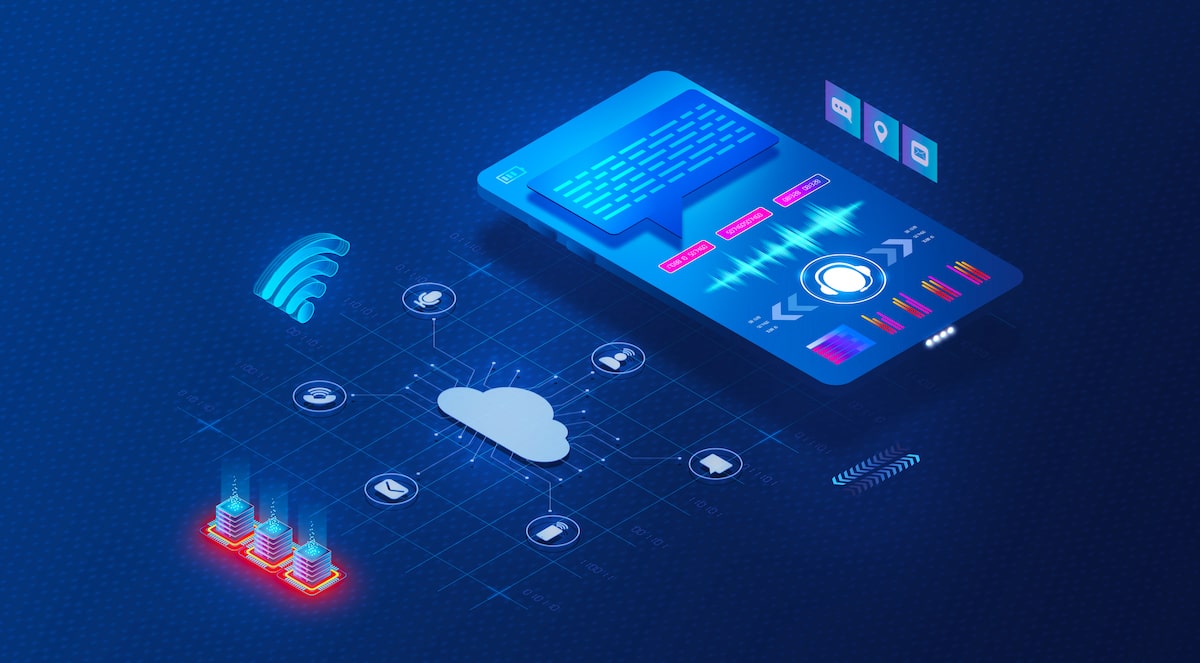Contact Center as a Service (CCaaS): A Definitive Guide
What is CCaaS and who needs it?
CCaaS, UCaaS, CPaaS—with all the acronyms floating around in customer service today, it can be difficult to know what you really need to get your team up and running. Luckily for you, CCaaS is an all-in-one-solution that can give you a cloud-based contact center, whether you’re looking to run a contact center in-house or outsource to another team.
However, before you can understand the benefits of CCaaS and if it’s a good idea for your team, you’ll need to understand what it is—and how it differs from other “as-a-Service” solutions. We’ll outline all this and more in our definitive guide to CCaaS.
What is Contact Center as a Service (CCaaS)?
Contact Center as a Service is a customer experience software option where all of your contact center solutions are hosted in the cloud. The software and service is maintained by a contact center provider. Essentially, your company will pay for a “subscription” to their software, or the specific features that you need, while hosting your contact center in the cloud and accessing it from anywhere.
The CCaaS model offers a variety of benefits, but two of the biggest ones are cost savings and scalability. With a CCaaS model, you can purchase only as much technology as you need—a specific number of features or software licenses—and you don’t need to worry about hosting or maintenance. As a result, the CCaaS model is usually much cheaper overall, and reduces the need for internal IT support. In addition, it’s easy to scale, as you can simply pay for more or less support, licenses and features as needed.
Traditionally, contact centers had to host their software and servers on-premise, which is more expensive, requires additional space and support and comes with more limitations in terms of flexibility, scalability and channel support. While this is still an option, there’s some clear pros and cons of hosting on-premise vs. hosting in the cloud. We’ll break them down in the next section.
CCaaS vs. On-Premise Hosting
In order to understand which option is right for your company, it’s essential to understand the differences between the two. On-premise hosting is the traditional option, but CCaaS, or cloud-based hosting, is becoming more popular for contact centers who are looking to make the most of current technology and adapt to changing consumer preferences.
|
CCaaS (Cloud-Based) |
On-Premise Hosting |
|
|---|---|---|
| Costs |
pay-as-you-go, costs are typically per user |
more upfront costs required & generally more expensive in the long run |
| Setup |
typically takes less than two weeks to get set up |
setup can take several months |
| Equipment |
everything is hosted on the cloud, so equipment needs are minimal (laptop, WiFi) |
requires hardware + software, plus office space to host the servers and hardware |
| Channel Support |
usually offers omnichannel support options |
typically just phone channels available |
| Management |
your service provider will own and maintain the software and hardware |
you own the software and hardware, and manage it via an in-house IT team |
| Security & Stability |
your provider is responsible for security and uptime (most providers guarantee a minimum uptime rate) |
your company will have complete control over security and infrastructure, which may feel more secure for some industries |
| Support |
your provider is responsible for supporting both the program and your team’s users |
assistance for any issues will be managed by your in-house IT team |
As you can see, there are pros and cons to both cloud-based and on-premise hosting. We’ll break down some of the most important ones to consider before making a decision.
Costs and Setup:
Cloud-based contact centers (CCaaS) are by far the more affordable option, offering cost-effective ways to scale your contact center. Since costs for CCaaS are typically per-user, you can scale effortlessly and costs scale accordingly. Most CCaaS providers use a pay-as-you-go model, which means you can adjust licenses (and costs) as needed based on your number of agents.
For contact centers whose staffing needs change seasonally, CCaaS options offer a cost-effective way to pay for only what you need. In addition, since the software is hosted in the cloud and managed by an off-site provider, it’s typically extremely easy to get set up—you can have a full scale contact center up and running in just weeks.
Conversely, when hosting on-premise, there are a lot more upfront costs included, from installation and setup of servers and hardwares to initial software licensing fees and so on. It’s also typically more expensive in the long run, since you’re paying to host and maintain the software completely, and you’re not paying on a per-user basis: the fewer users you have, the more you pay per user; and your costs are mostly fixed regardless of team size. This on-site physical management also means it can take months to get everything up and running.
Winner: CCaaS
Equipment & Work:
With cloud-based options, your equipment needs are minimal, and your work options for agents are much more varied. When managing your contact center via CCaaS, your only true equipment needs are a laptop and an internet connection (and perhaps a headset). As a result, agents have much more flexibility and you can schedule shifts for both remote and on-premise work.
When your software is hosted on-premise, remote work becomes much more difficult, if not downright impossible. For some contact centers, this is hardly an obstacle, but as more and more of the US labor market demands remote working options, it’s certainly something to consider. In addition, when you’re using on-premise hosting, you’ll need to manage the hardware and software, as well as the servers it’s hosted on, so you’ll need office space to host the physical servers and hardware.
Winner: CCaaS
Security, Stability & Support:
When using CCaaS, the security and stability of your software, and the support you receive for it, is all dependent on the stability of your provider. An excellent provider will offer top-notch security and support that would rival anything you would expect of an in-house team. In addition, most providers guarantee at least 99%+ uptime, so your overall stability should be solid. However, not all providers are exceptional—and locking yourself into a subpar partnership can cause problems for the stability or security of your systems.
On the other hand, on-premise hosting requires you to have an in-house team that’s capable of not only managing and maintaining your servers and software, but also providing security and stability to your systems, and support for your team. If you have an in-house team capable of this, some industries feel more comfortable hosting their software in-house. You’ll maintain complete control over security and infrastructure, which can be a benefit—but it also means that if something goes wrong, it’s all on you. It also requires your in-house team to be available whenever your contact center is open for assistance with any downtime or other issues.
Winner: Draw
Of course, you’ll also need to consider the type of call center you’re operating, as each type of call center has unique challenges. Here’s the pros and cons of CCaaS whether you’re operating in-house, remote or outsourced call centers.
Ready to take your business to the next level? Let our call center experts show you how we've helped organizations just like yours seamlessly scale while lowering costs and increasing efficiencies.
You won't regret it.
CCaaS for In-House Call Centers
If you’re currently operating an in-house call center, CCaaS can provide you with a whole lot of benefits. Take a look at the pros and cons:
|
CCaaS In-House Pros |
CCaaS In-House Cons |
|---|---|
|
easier way to offer omnichannel support |
less control over infrastructure and security |
|
no need to maintain or manage expensive software or house bulky hardware |
have to rely on the stability of the provider for uptime, support, bandwidth, etc. |
|
low upfront investment and lower costs overall |
|
|
many API integrations are typically available to integrate with your current workflows |
|
|
no need for an in-house IT department to manage |
|
|
quickest way to get your contact center up and running |
As you can see, using CCaaS while running an in-house call center has a lot of benefits. However, it’s important to consider that there’s also less control over infrastructure and it’s essential to choose a provider that has reliable security and stability. Since your provider will be responsible for maintaining, managing, servicing and supporting your software—where your entire contact center will be managed—you’ll need to be able to trust them fully. An unreliable provider will mean an unreliable contact center.
With a great provider, though, CCaaS is a no-brainer for in-house teams. It reduces the amount of maintenance and service you have to manage, freeing up time for internal teams to focus on core functions—like making the customer happy. It’s also more cost-effective, scalable and flexible.
CCaaS for Remote Call Centers
CCaaS is the best option for organizations who are running, or would like to run, a remote call center. With traditional on-premise software and hardware, having agents work remotely is extremely difficult. With cloud-based software, it’s easy.
You’ll experience all of the same benefits (and potential pitfalls) as an in-house call center, as mentioned above. However, you’ll also gain ample flexibility, and scalability for your team. In addition, each team member will be able to reach support just as easily, since your provider will be remote as well (as opposed to an in-house IT team). If your entire team is remote—not just your call center—CCaaS options allow you to forgo physical space to house the hardware as well, saving your team even more money in the long-run.
With remote call centers, the biggest concern you’ll have with cloud-based software is security. Since employees can typically log into the cloud-based systems from work or personal devices, from all over the world, increasing security is a must. Your provider should be able to provide additional security options for you as a remote team.
CCaaS for Outsourced Call Centers
If you’re outsourcing your call center, it’s likely they already have a robust system in place for managing contact center operations. However, as you weigh options, you may notice that some call centers use CCaaS software to manage—and may be wondering about the security or stability of such cloud-based operations.
The good news is: cloud-based contact centers are just as secure for an outsourced partner as they would be in-house. However the security of your systems will be doubly-outsourced: once from the CCaaS provider to your outsourcing team, and then from your outsourcing team managing your operations. As a result, you will need to have full trust in your outsourcing team to manage security and operations.
Of course, if you don’t fully trust them, you shouldn’t be working with them as a provider, regardless of whether they host their contact center physically or in the cloud.
Keep in mind too, that CCaaS solutions allow contact centers to hire remotely as needed—offering you the best talent anywhere around the world—and optimizing costs—allowing you to reap the (financial) benefit of a more affordable system. Not to mention that a cloud-based system can often allow you to be more involved with the day-to-day and results of your contact center, as you’ll be able to access it from anywhere in the world.
CCaaS, UCaaS, or CPaaS – Which is Right for You?
CCaaS, UCaaS, CPaaS—all the “as-a-Service” options on the market today can make understanding them—and deciding which you need—complicated. The most important thing to know about these three is that they all serve somewhat different functions within a call center or an organization—they’re not interchangeable. We’ll break down the distinctions between each.
CCaaS
CCaaS (Contact-Center-as-a-Service) is, as discussed above, cloud-based technology that allows teams to “share” a contact center software on a pay-as-you-go basis. The software and service is owned and maintained by a contact center provider.
CCaaS platforms are designed to focus primarily on external communication, that is, communication between the company (or its representatives) and its customers. It typically offers advanced features designed to improve customer experience and satisfaction (such as IVR, call queueing, call routing and so on) and multi-channel support (such as VoIP, email, social media, etc.).
UCaaS
UCaaS (Unified-Communications-as-a-Service) is also cloud-based communications software and is hosted and maintained, similarly, by a provider. However, while the technology of UCaaS and CCaaS are similar, the function and usage is different.
UCaaS is designed to streamline real-time internal communications, such as email, messaging, video calls, and so on, within a single interface. With UCaaS, organizations and teams have a centralized communications solution that makes distributed communication easier. By eliminating the need for multiple communication apps or softwares (i.e., an email provider, a messaging provider and so on), it streamlines and organizes communication, saving time and reducing information loss.
The key differentiator here is, of course, that UCaaS is more focused on business and internal communications, while CCaaS is focused on the customer.
CPaaS
CPaaS (Communications-Platform-as-a-Service) is the most technical of all of these solutions, as well as the most customizable. Like UCaaS and CCaaS, it’s a cloud-based platform that allows companies to “buy-in” to features on an as-needed basis. With CPaaS, internal developers can add or customize individual programmable APIs into an existing app or communications system.
Instead of building the feature from scratch (which is time-consuming and expensive), CPaaS allows you to pick-and-choose the features you want and then use SDKs or APIs to integrate them into your current system or app.
Unlike UCaaS or CCaaS solutions, which are generally “pre-built” and just require setting up for your team’s needs and goals, CPaaS offers individual solutions that require coding or IT knowledge to then implement into an existing system or app. They focus on customer communications, but it’s generally more self-service or outbound communication rather than inbound customer service channels.
For example, a popular e-commerce brand might use a CPaaS API to add SMS notifications for customers for order and shipping update or marketing promotions. These communications are all designed to create a better experience for the customer, but they’re much broader in nature than a CCaaS typically offers, and they generally integrate with an already-existing customer resource (i.e. a brand app).
Benefits of Leveraging Contact Center as a Service
As discussed above, CCaaS solutions are an excellent solution for all kinds of contact centers, particularly for in-house or remote teams. And while CCaaS can definitely make things easier compared to managing on-premise hardware, there’s benefits for both you and the customer at stake. Some of the benefits you can expect to see with CCaaS solutions include:
Increased productivity: With a centralized and cloud-based communications system, agents are more easily able to complete a variety of customer service tasks, from logging calls to looking up customer history to finding knowledge base information.
In addition, most CCaaS solutions include state-of-the-art technology and AI capabilities—such as IVR, call routing and so on—to improve efficiency for customers and agents. When customers call, they’ll be routed to the appropriate department and even to a specific agent based on their concern, avoiding annoying—and time-consuming—transferring, improving FCR rates, reducing handle times and wait times.
Increased customer satisfaction: Speaking of reduced wait times, CCaaS solutions can improve customer satisfaction across the board. Aside from making their calls more efficient—thus lowering your CES (Customer Effort Scores)—most CCaaS providers offer omnichannel support.
With omnichannel support, your customers have more channels than ever to contact you through, allowing them to use their preferred channel, while still getting quick, accurate service. CCaaS also allows your customer service agents to get more details on a customer’s communication (and purchase!) history as soon as the communication kicks off, so you can deliver more accurate and personalized service.
Workforce optimization: With all your customer communications and channels hosted in one place, agents can improve productivity, allowing you to optimize your workforce. Not to mention that most CCaaS have numerous API integrations available, meaning you can connect your CCaaS tools to your WFO tools, optimizing processes and workflows for everyone’s benefit.
Scalability and cost savings: Leveraging a CCaaS solution means your contact center is as flexible and scalable as you need it to be. Rather than investing in expensive software, maintaining servers and managing complicated upgrades, you can simply pay for what you need as you go.
More agents this fall for the holiday season? No problem, simply upgrade your number of users and they’ll be up and running in a few days with no change to your operations. Expanding into a new market? Your software easily expands with you. Want to scale back? That’s easy to do as well.
How To Pick The Right CCaaS Provider
Most importantly, when selecting and implementing CCaaS solutions, you need to choose a provider you can trust who will truly partner with you. You should look not only at the CCaaS software itself, but also the provider offering it. After all, the features and benefits of the software are only as good as the provider that is managing and maintaining it.
Here are six key things to look for as you choose a CCaaS partner:
- Offers an omnichannel presence. CCaaS solutions should offer all the communication tools needed by agents (and customers!) to make communicating via any channel easy. That includes phone, email, web chat, SMS, social media, video and anything else your organization uses or wants to use. Your CCaaS should support all of the channels you need to use—now or in the future—as well as omnichannel engagement for the customer journey. In other words: a seamless end-to-end customer experience, and a platform that can manage and connect all customer communications in one place.
- Self-service / AI / Automation options. Customers are coming to expect—and even prefer—AI and self-service options. Why? Because the answers are instantaneous and the virtual AI “agents” are available at any time.As a result, your CCaaS should offer AI and self-service solutions that improve customer experiences by giving them access to knowledge bases, chatbots and other answers to simple questions on demand. Automation can also help with agent workflow processes, assist agents in giving more accurate information, mitigate fraud, collect and analyze data and conversations, and more. Without it, you’re leaving a lot of benefits and process optimization on the table.
- Security for customer data. Many CCaaS now are some of the highest-security customer service options available. With some providers offering as much as 99.99% uptime for reliability and high-security and PCI-compliance software for financial or healthcare contact centers, your CCaaS platform and your provider should both offer a high level of security.
- Analytics and data reporting. One of the key benefits of CCaaS is the high level of communications integration. If you don’t have data and analytics as a part of that, you’re missing out on a lot of opportunities from having all of that customer interaction centralized. With historical and real-time data, you should be able track metrics and KPIs, analyze agent and customer data, and gain valuable business insights that you can use to improve and grow. In addition, look for customizable dashboards that you can use for real-time insights and agent productivity and improvement.
- CX and industry experience. Your provider will be managing and maintaining the software which hosts your contact center—which means they should know a thing or two about customer experience and your industry. Look for a provider that has verified reviews and testimonials from organizations similar to yours, and proven results for their CCaaS solutions.
- Prioritize flexibility, scalability and innovation. Ideally, you’ll be using these tools—and working with this provider—for a long time. In order for it to be a beneficial partnership for your organization, you’ll need to ensure they’ll be able to scale with you as you grow, embrace and innovate new tools and technology, and provide flexibility for changing needs. You can gauge this by their website—how many new features and tools have they created lately? What innovation are they currently working on?—and by discussing it with previous or current clients, as well as the internal team. Ensure your contract has room for flexibility and growth.
Ultimately, CCaaS should improve customer service and satisfaction, make the customer journey more seamless and make your agents more efficient and effective. For most teams, it’s a no-brainer. However, finding a team that can take your customer service to the next level can be more challenging. That’s where ROI CX Solutions comes in—we’re here to help provide world-class call center services to organizations who are ready to offer exceptional support and service.






